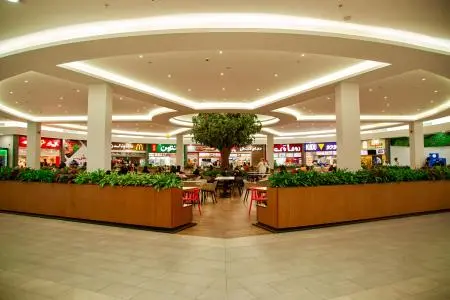PHOTO
The global Covid-19 pandemic has shaken nearly all industries, but the retail sector was hit particularly hard by the measures put in place by governments to curb the spread of coronavirus. Travel and mobility restrictions and lockdowns meant malls and brick-and-mortar retail destinations were devoid of consumers for several months since early 2020 in many parts of the world.
While the grave economic crisis that ensued gave rise to a fear of losing revenue, occupancy, and cash flow, the sudden uptick in e-commerce has induced some to worry or even project that customers have settled on online shopping, forever.
As a cyclical industry, retail is no stranger to periods of boom and recession resulting from economic expansion or contraction. This exposure helped the sector to remain resilient in the face of profound uncertainty brought about by the unprecedented global health situation.
Retailers around the world have seen a rebound in consumer spending after they reopened after weeks or months of store closures. Retail sales surged 10.7% in In the United States in March 2021, although partly driven by stimulus checks[1]. In Saudi Arabia, we have been witnessing a promising recovery with a steady increase in in-store purchases.
No substitute for in-person retail
There is no denying that Covid-19 has altered consumer behaviors substantially with emerging economies witnessing substantial growth in online shopping. We also recognize that the effects of the pandemic will linger well into the future.
However, online shopping is not an alternative to in-person retail yet. There are many elements of brick-and-mortar shopping that cannot be replaced by online; spontaneous purchases, the ability to evoke experiences and sensations, meaningful engagements, and of course, being able to physically handle the products.
Personalized experience is the winning edge of physical stores over e-commerce and consumers will continue to appreciate the value of human connection and interaction. Face-to-face customer service helps stores to provide offerings tailored to the customers’ specific needs and situations.
That said, I appreciate the prospects of e-commerce. Brick-and-mortar businesses can create greater and even more engaging retail experiences if they incorporate digital technology into their physical store environments and serve the customers’ need for convenience.
Digitization not a threat but an opportunity
Businesses must adapt their business model to the new normal to thrive in a post-pandemic world. Consumers want a seamless experience across different channels and digitization holds the potential to bring new experiences to online-only shoppers.
Both online and offline marketplaces can meaningfully and coherently exist. Many malls and retailers have utilized the downtime last year to digitize operations, develop digital offerings, and build e-commerce partnerships.
At Kinan Malls, we have partnered with the region’s leading e-commerce player Noon to provide pick-up services for our shopping centers’ online clients. With this new feature, we are presenting them new possibilities of retailing by linking digital and physical shopping, while continuing to offer in-store experiences enriched by a strong human connection.
New future demands better
Malls have always meant to be lifestyle centers catering to the various social, physical and emotional needs of customers. The post-pandemic consumer’s appetites and behaviors mean that malls have to be elevated further into experience centers and multi-purpose destinations. They can bring back their customers by introducing diverse and extensive retail, leisure and food and beverage offerings.
In 2020, we made it a priority to identify gaps in the offerings at Kinan Malls. In line with our exclusive insights into the future of retail, we developed strategies and executed projects that would create the best possible retail presence and value for our shareholders, visitors, and partners. We have long identified that the redevelopment of our assets would eventually result in higher footfall and spending.
Realizing that proximity to home continues to positively influence people’s decision when choosing a mall, we have built a strong footprint in Saudi Arabia. With 10 malls across 6 different locations, Kinan Malls is currently one of the largest mall operators in the Kingdom.
Despite mobility restrictions, supply chain disruptions, and labor shortage, we have managed to deliver a positive financial year in 2020 with a net profit. Looking confidently to the future, we have outlined exciting plans within our 5-year strategy to further enhance Kinan’s retail footprint and financial performance.
© Press Release 2021
Disclaimer: The contents of this press release was provided from an external third party provider. This website is not responsible for, and does not control, such external content. This content is provided on an “as is” and “as available” basis and has not been edited in any way. Neither this website nor our affiliates guarantee the accuracy of or endorse the views or opinions expressed in this press release.
The press release is provided for informational purposes only. The content does not provide tax, legal or investment advice or opinion regarding the suitability, value or profitability of any particular security, portfolio or investment strategy. Neither this website nor our affiliates shall be liable for any errors or inaccuracies in the content, or for any actions taken by you in reliance thereon. You expressly agree that your use of the information within this article is at your sole risk.
To the fullest extent permitted by applicable law, this website, its parent company, its subsidiaries, its affiliates and the respective shareholders, directors, officers, employees, agents, advertisers, content providers and licensors will not be liable (jointly or severally) to you for any direct, indirect, consequential, special, incidental, punitive or exemplary damages, including without limitation, lost profits, lost savings and lost revenues, whether in negligence, tort, contract or any other theory of liability, even if the parties have been advised of the possibility or could have foreseen any such damages.











